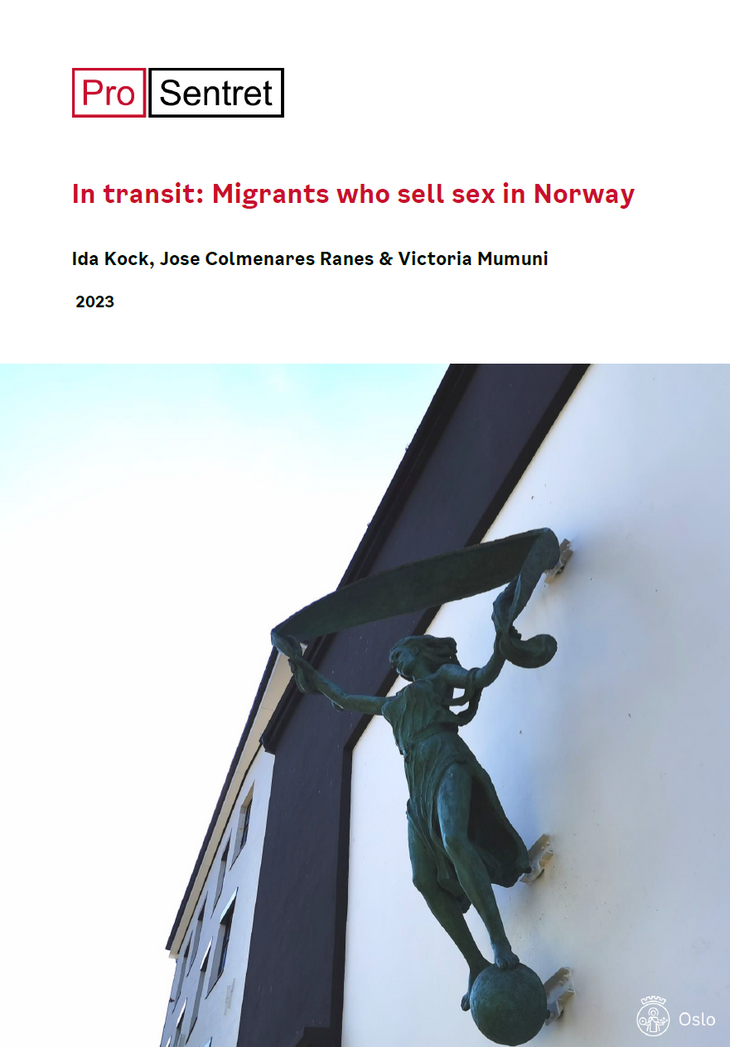In transit: Migrants who sell sex in Norway

New report on migrants who sell sex in Norway
The first part of this report is a mapping of transient migrants who sell sex in Norway. The main aim of this mapping has been to look into the specifics of the migration journey for persons who sell sex: What acts as a push factor to leave one’s home country, and what pulls people to start selling sex in Norway?
Our sample shows that for most, Norway is not the first destination in informants' migration journeys or the first country informants sold sex in. A majority also held EU citizenship. In some cases, especially among persons from South-Eastern Europe, they were born in an EU country. Most had, however, migrated to an EU country from Latin America, South-East Asia or a non-EU Eastern European country. Only a handful of informants expressed a wish to live in Norway permanently.
Not surprisingly, the main driver for leaving one’s home country was a lack of economic opportunity or poverty, in some cases extreme poverty. In addition, especially among Latin-American transwomen, gender-based discrimination and harassment were migration drivers. Finally, for some informants, financing studies, wanting to travel, or saving up for a specific goal were drivers to migrate to sell sex.
Six informants were identified as especially vulnerable. Five of these identified as Roma, all EU citizens. In the case of the Roma informants, several had turned to selling sex after other income streams dried up, namely begging. Begging was described as no longer feasible since people in Norway had stopped carrying cash. The drive towards a cashless society in Norway, exacerbated during the pandemic, has negative implications for extremely vulnerable migrant groups, including driving persons into prostitution.
A majority had sold sex in other countries before arriving in Norway. In some cases, informants had had their prostitution debut in their home countries, others in the country where they first migrated. Others still had sold sex in several European countries but never in their countries of residence. Most had started selling sex between the ages of eighteen to thirty. Many had experience from regular work, particularly in the service or beauty industries.
Most informants described relying on private networks, mainly friends, to receive information and aid in migrating. Though we saw little indication of exploitation within these private networks, further studies are needed on this subject.
Very few informants stated they had been victims of human trafficking or other types of organised crime during their migration journeys. However, this does not necessarily reflect the reality. Informants may have withheld information or did not view the “facilitators” as exploitative. The use of so-called "agencies" described by an Eastern-European informant needs to be monitored closely in future, especially in the wake of the Russo-Ukrainian war.
As mentioned in this report, prostitution is now mainly a migration-driven phenomenon in Norway. The report has shown how most informants sold sex in Norway on a seasonal basis, with informants typically staying for a few weeks or months. This fact has implications for service provision for persons who sell sex. In order to ensure the safety of persons who sell sex, service provision for the group must be focussed on providing services outside of regular health and welfare services, not on services mandated by a person's membership in the Norwegian national insurance scheme (folketrygden). Pro Sentret, and other service providers, who provide specialised health and social services for persons who sell sex, regardless of residency status, are crucial in reducing harm and identifying exploitation (including trafficking) among persons who sell sex.
The second part of the report is a literary review of relevant and recement white and grey literature on migration, human trafficking and prostitution, with a focus on Norway and the Nordic countries.
